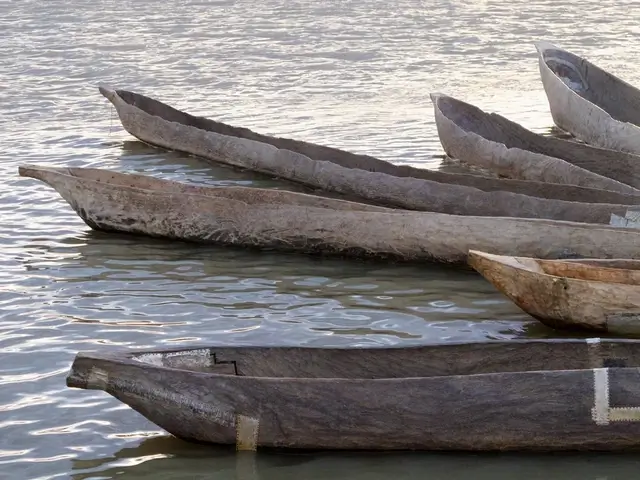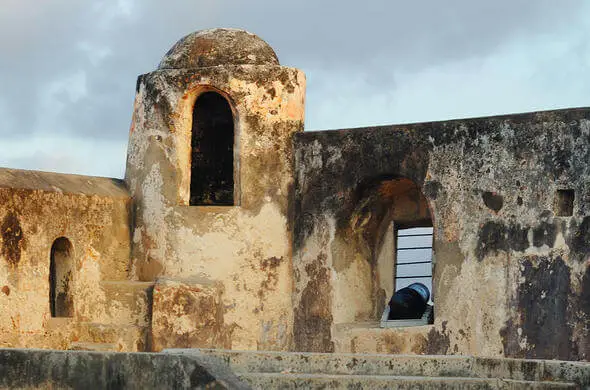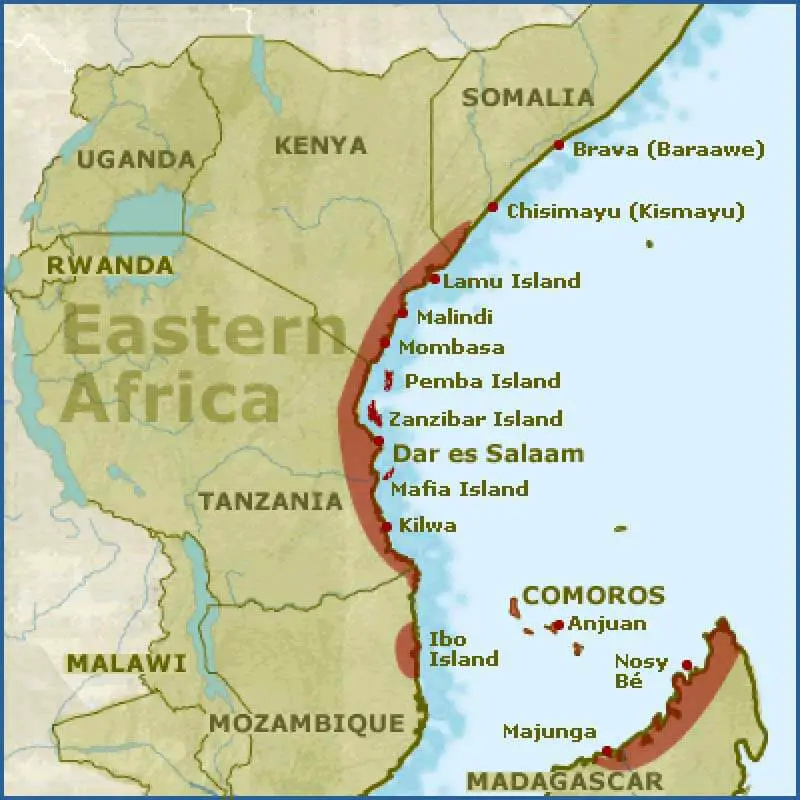Swahili City States were communities of people who lived along the East African coast stretching from Somalia, Kenya, Tanzania, and Mozambique (Pouwels &Kusimba, 2000).
The city-states emerged in the 9th century as vibrant trading centers and existed until the 18th century.
The traders also intermarried with the Bantu communities as well, a development that resulted in the emergence of the Swahili society, language, and culture.
The city-states were, therefore, critical in spreading Islam in the East African region.
The city-states were established with the arrival of Persian and Arab Traders on the East African Coast through the Indian Ocean.
However, the city-states encountered several challenges that undermined their continuity, one of which included competition and rivalry among themselves, which often brought about wars in a bid to control key ports and trade routes into the interior (Kresse & Vierke, 2022).
They were further weakened by the arrival of the Portuguese in the 15th century, who introduced new political dynamics in East Africa and also disrupted the trade routes that they had established (Pouwels &Kusimba, 2000; Maina 2020).
The autonomy of the city-states was weakened by the subsequent arrival of the Omani Arabs and British colonialist with the coastal region eventually coming under the control of European colonial powers, forcing the Swahili city-states to further disintegrate and lose their independence as political entities (Perkins, 2015).
Swahili City States Geography
Swahili States was located along the narrow Swahili coast, along the East African Ocean line.
The city-states stretched from Northern Somalia to the south of Mozambique, featuring a multicultural polygon that included Bantu-speaking Africans, Indian Ocean people, Arabs, and Persians.
Some of the renowned city-states along the East African Coast included Sofala and Dar es Salaam (located in the then Mozambique); Pate, Gede, Malindi, Lamu, and Mombasa (in Kenya); and other coastal islands, including Comoros and Zanzibar.
Swahili City States Governance
The Swahili city-states were autonomous entities that were ruled by Kings otherwise known as sultans.
The sultans presided over the council of elders who helped them to govern their territories and their rule was likely based on Islamic legal principles (Maina 2020).
The Sultanate position was hereditary and therefore, passed down to the members of the ruling family from one generation to the other.
Apart from political duties, the Sultan also served as the religious leader of their city-state; thereby exercising executive powers on behalf of the city-state residents, representing them to other forums in diplomatic matters, and ensuring that law and order were maintained within the city-state (Kusimba, 2016).
The council of elders was made up of the influential ruling elite in society and they advised the Sultan on matters of governance. They Influenced policy-making within the city-states, resolve disputes, and advanced social order.
Furthermore, each city-state developed its own legal system for upholding justice and resolving conflicts among its residents (Maina 2020).
The legal systems were largely premised on Islamic law and, therefore, provided the legal principles upon which the system was executed (Kresse & Vierke, 2022).
Therefore, Qadhis ruled over legal matters in line with customary laws and Islamic jurisprudence in the quest to advocate for justice and fairness.
They were also local administrators within the city-state who were appointed by the ruling elite and were charged with responsibilities such as public safety and security, tribulations, taxation, and development and maintenance of the public infrastructure (Perkins, 2015).
Swahili City States Technology

Shipbuilding was one of the most prominent technologies in the Swahili States since their economy improved maritime activities, which included seafaring and trade (Maina 2020).
The ships were therefore necessary for connecting the Swahili cities with others in the region through the Indian Ocean and for long-distance trade with other continents.
The ships were made using timber, which was curved and shaped into planks, and then assembled into a hull using wood joints.
They were wrapped together using ropes and then reinforced with nails and wooden pegs.
They equipped the ships with sails as most used wind power and padded their interior with cotton or woolen palm.
Some of the distinctive features of the ships that were made by the Swahili people included a high stern and prow, which enhanced their seaworthiness and stability.
They also had cabins for passengers and crew and cargo storage compartments.
Swahili City States Economy
The city-states served as the entry point to the interior of Africa from the East African coast, whereby Persian and Arab traders established networks with the indigenous communities, which were mostly from the Bantu communities (Pouwels &Kusimba, 2000).
The city-states were sustained by proceeds from trade, which involved goods such as timber, ivory, gold, spices, and slaves who are exchanged for the luxurious goods that the Arab and Persian traders introduced such as precious metals, textiles, porcelain, and glassware (Maina 2020).
Swahili City States Economy
Islam is the main religion in the Swahili city-states and is claimed to have been introduced way back in the 8th century when the city-states were being founded after the Bantus communities along the coast began interacting with Arab and Persian traders who arrived through the Indian Ocean coastline (Pouwels &Kusimba, 2000).
Islam later became the religion of the ruling elite in the city-states, who significantly shaped the cultural development of the entities (Kusimba, 2016).
They presided over the establishment of mosques in the city States, which became the venues for worship, social gatherings, and education (Kresse & Vierke, 2022).
Islamic education and religious instructions through the madrassas became a significant component of the early Swahili culture, where Islamic theology, Islamic jurisprudence, and Arabic were taught to believers (Pouwels &Kusimba, 2000).
The city-states also observed Islamic festivals such as Eid al-Fitr and Eid al-Adha, which brought together Muslims to observe communion prayer, feast and share their possessions with those who are poor amongst them (Perkins, 2015).
Swahili City States Culture

The Swahili City States culture was largely an urban civilization that was premised on trading activities.
The cultural trends in these cities are influenced by the wealthy ruling class made up of a few renowned families, who were also composed of the key decision-makers in the cities (Perkins, 2015).
A majority of the people, however, belonged to the working class and were engaged in occupations such as artisans, craftsmen, clerks, and sailors.
The Swahili culture was significantly influenced by the Islamic religion, which was the religion that the ruling class subscribed to (Kresse & Vierke, 2022).
The architecture of the city, therefore, included mosques that were built as early as the 9th century. However, whereas the culture was significantly affected by Islam, it was also distinctively African considering the use of the Swahili language for communication, which borrowed heavily from the vocabulary of Bantu languages (Perkins, 2015).
The Arab and Persian vocabulary that were adopted, were Africanized.
The Persian and Arab influence was also evident in the architecture of the cities, cuisine, and boat-making technologies that were adopted (Pouwels &Kusimba, 2000).
Swahili States Main Trade Routes
The Swahili States and various trade routes which included the Indian Ocean trade route that linked the city-states of Southeast Asia, India, China, and the Arabian Peninsula (Maina 2020).
There was also the Red Sea trade route through which Traders sailed along the East African coast heading North towards the Red Sea, thereby connecting with ports such as Jada and Aiden in the Arabian Peninsula.
The trans-Saharan trade route was used to access West Africa and the Mediterranean region while the Inland trade route penetrated the interior of East Africa, including countries such as Kenya, Uganda, Tanzania, and Congo.
Other Facts
While the Swahili states disintegrated in the 18th century due to their micro and macro political and economic developments around them, their greatest contribution to the African continent and human history at large is their development of the Swahili language and culture which has continued to spread and flourish throughout East Africa and the whole world (Kusimba, 2016; Maina 2020).
Currently, Swahili is the official language in Tanzania, Kenya, and the African Union.
Swahili is also the most spoken language in Africa, with over 150 million speakers (Perkins, 2015).
Swahili is also inculcated in the curriculum as a language subject in countries such as Kenya, Tanzania, Uganda, and South Africa.
References
Kresse, K., & Vierke, C. (2022). Swahili language and literature as resources for Indian Ocean studies. History Compass, 20(7), e12725. https://doi.org/10.1111/hic3.12725
Kusimba, C. (2016). Origins of the Swahili State. https://doi.org/10.13140/RG.2.2.21950.69446
Maina, N. K. (2020). The Shirazi Civilisation and its Impact on the East African Coast. Utafiti, 14(2), 242–256. https://doi.org/10.1163/26836408-14010014
Perkins, J. (2015). The Indian Ocean and Swahili Coast coins, international networks and local developments. Afriques. Débats, Méthodes et Terrains d’histoire, 06, Article 06. https://doi.org/10.4000/afriques.1769
Pouwels, R., & Kusimba, C. (2000). The Rise and Fall of Swahili States. The International Journal of African Historical Studies, 33, 437. https://doi.org/10.2307/220701
Image sources: 1, 2, 3

